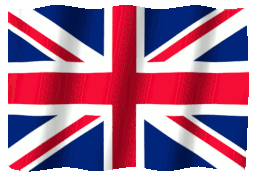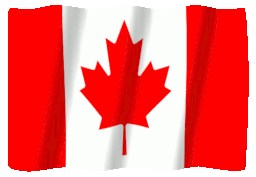New Trends in Paper Innovation

New Trends in Paper Innovation
The new trends and latest lines of innovation in the paper industry are fundamentally: use of cellulose fibers from new natural sources, bio-composites, printed electronics, microfibrillated cellulose, new packaging concepts and new uses and daily applications never seen before, according to the report ‘The era of cellulose’. The most innovative products in the pulp and paper industry, an initiative of CEPI ( European Confederation of Paper Industries, to which Aspapel belongs), in which numerous Spanish companies and other European countries have collaborated.
The report includes a broad overview of innovative paper and cardboard products, such as toilet paper that cleans pipes, the sack of cement that disappears, cellulose from milk or cocoa, bio-composites of hi-tech cellulose for the car or the cardboard container that cools the cellar, among many other samples of paper innovation “made in UE”. The era of cellulose has begun: there are no limits to cellulose and paper in this new post-oil era. The bioeconomy is already a reality.
Cellulose Fibers From New Natural Sources
Cellulose is very abundant in nature and can be obtained from many different renewable sources. In addition to cellulose from wood, the paper industry is also using fiber from milk, grasses, leather or cocoa husks.
Papermilk (paper made from milk fibers)
By including milk fibers in the paper production process, the result is a special paper with an excellent paper that allows all types of printing and packaging solutions: A really attractive communication medium. Papermilk is very soft and elegant with a velvety touch.
Containing eggs safely while contributing positively to the environment is a challenge achieved by GreeNest. This innovative egg cup is made of 50% grass fibers. The carbon footprint and water consumption of this product is lower than that of similar products, in addition to being recyclable, biodegradable and compostable.
This new product is made with a mixture of cellulose pulp and leather fiber residues from industrial processes. The result is a fully recyclable and compostable paper with a soft touch and a natural appearance where leather fibers are appreciated, depending on the color of the product.
The Belgian chocolate maker, Barry Callebaut, and the paper industry have turned cocoa shells into luxurious packaging. The shells are crushed and added to the pulp of cellulose fibers used in paper production. Cocoa paper is available in a wide range of earth tones and fruit colors.
Coffee Paper Range (recycled paper made from coffee cups)
The paper industry has come up with a simple process to separate the plastic coating of the paper from the coffee cups avoiding waste. The cups are made of 90% paper that is recycled into new paper. And the remaining 10% is plastic that is sent out to be transformed into another product. Coffee paper range is made from recycled fiber and is available in six color ranges.
The post-oil era has arrived: there is no limit to the potential uses of cellulose fiber from wood. Paper is the perfect natural and renewable substitute for materials from petroleum. We are talking about cellulose fiber biocomposites, molded hi-tech products, extruded or assembled from components, lighter, and from a renewable source such as wood.
Paptic: New wood-based Bags
This innovative material made from wood is the perfect alternative to plastic bags, since it combines the functionality of plastic with the sustainability of paper. In addition, it can be produced in paper mills, minimizing investment costs.
Kraft paste mix with virgin polymers. A strong and lightweight material with colors on demand. Ideal for the automobile industry, it becomes light car parts with a reduced carbon footprint.
Renewable Formability (cellulose reinforced plastic)
Plastic composite reinforced with cellulose fiber with a high content of renewable material. This compound has unlimited possibilities of use, from furniture to electronic components.
Printed Electronics and Nanotechnology
Today, the market and consumers demand more than products: they want solutions. In the field of printed electronics and nanotechnology, the European paper industry is already developing innovative solutions: complete electronic circuits or RFIB labels printed on paper, nanocellulose insulators …
Powercoat Alive for Printed Electronics
RFID tags or complete electronic circuits can be printed on this soft, stable and novel paper. An ecological alternative that opens wide possibilities to the world of graphic design and the most creative packaging.
Food container that includes RFID tags or NFC technology, which provides information on the composition of the products as allergens (based on information that the consumer has provided through the mobile application).
Cellulose nanocrystals (NCC) are found in the sludge of papermaking. They have great resistance and lightness, besides being resistant to water and fire. They can be applied to make different types of insulators that will soon be present in houses, airplanes, cars, boats or wind turbines.
Innovative Packaging
Packaging has an increasingly important role in consumer purchasing decisions and incorporates increasingly sophisticated communication and protection functions. With innovative designs and connectivity solutions, paper and cardboard packaging is the sustainable response to new market demands. The packaging for electronic products with protective wings, anti-humidity packaging, cardboard pallets, the multi-box for online purchase, new solutions for bottles and cans or the bag of cement that disappears are just a few examples.
Protective Wings (protective packaging for electronic products)
Any electronic product requires safe packaging for transport. Protective Wings containers with protective fins are fully recyclable. With a smart folding technique, it is simple, tough and sustainable, perfect for the most sophisticated markets.
This container made with recycled paper and vegetable oil, repels water and fat, can be used to package fruit, vegetables, frozen or prepared foods. Ensures good protection against dust and other similar substances.
E-Wine (packaging for transporting wine bottles)
The main challenge when transporting wine bottles is to prevent knocks and glass breakage. This cardboard packaging is the best solution to prevent impacts on the bottles, both vertically and horizontally. And it only takes 10 seconds to assemble.
Practical, efficient and elegant clamping system for cans, which allows different forms of printing. It is a practical and attractive element from renewable sources. Will this be the future in the sales of beverage can packs?
Cardboard Pallet
Cardboard pallet, quick to assemble (only one minute) and resistant. No glue, no nails, no splinters. It has a weight of only 2 kilos, but it can support 250 times more, besides being customizable in its printing.
Online purchases are becoming more frequent and the customer expects to receive his order as protected as possible, which would involve many plastic bags. Grocery box contains several boxes of different sizes offering optimal food protection, easy packaging in the supermarket and safe and much more efficient transportation.
D-Sack: Dissolvable Cement Bag
This cement bag dissolves in the cement mixer without altering the properties of the concrete or mortar. Made of coated and uncoated papers and has a special ventilation system that keeps the contents dry by offering the same features as a traditional bag. Welcome to the world of packaging that disappears …
Renewable Paper Products with Super Powers for Daily Life
To make our lives easier and more comfortable, the paper industry develops renewable, recyclable and biodegradable products with unique and innovative features. The toilet paper that cleans the pipes, the container that cools the champagne or the champagne, the cardboard with a layer of active carbon that absorbs odors and protects against the migration of unwanted substances …
Bio Tech & Dissolve Tech: Active Hygiene (active hygiene)
Bio Tech, dermatologically tested toilet paper, cleans pipes using microorganisms harmless to humans and the environment. This biologically active toilet paper also reduces odors and the risks of clogging. Dissolve Tech, new generation of hand towels, dissolves in a few minutes in water.
Champagne Cooler (champagne or cava cooler)
The integration into the packaging of different functionalities, including conductive patterns that allow connectivity and interaction, with an attractive design, is paving the way for a new generation of packaging that not only meets the marketing objectives but also offers valuable services to the consumer . In the future, a bottle of champagne or champagne will stand out, illuminated and refrigerated by the container. This is already a reality. Let’s toast!
Catcher Board: A Very Smart Board
Catcher Board is a unique board. This natural and intelligent solution contains a layer of active carbon that absorbs odors and protects against the migration of unwanted substances. It is monomaterial, 100% certified and fully recyclable. Its use is safe for multiple applications.


